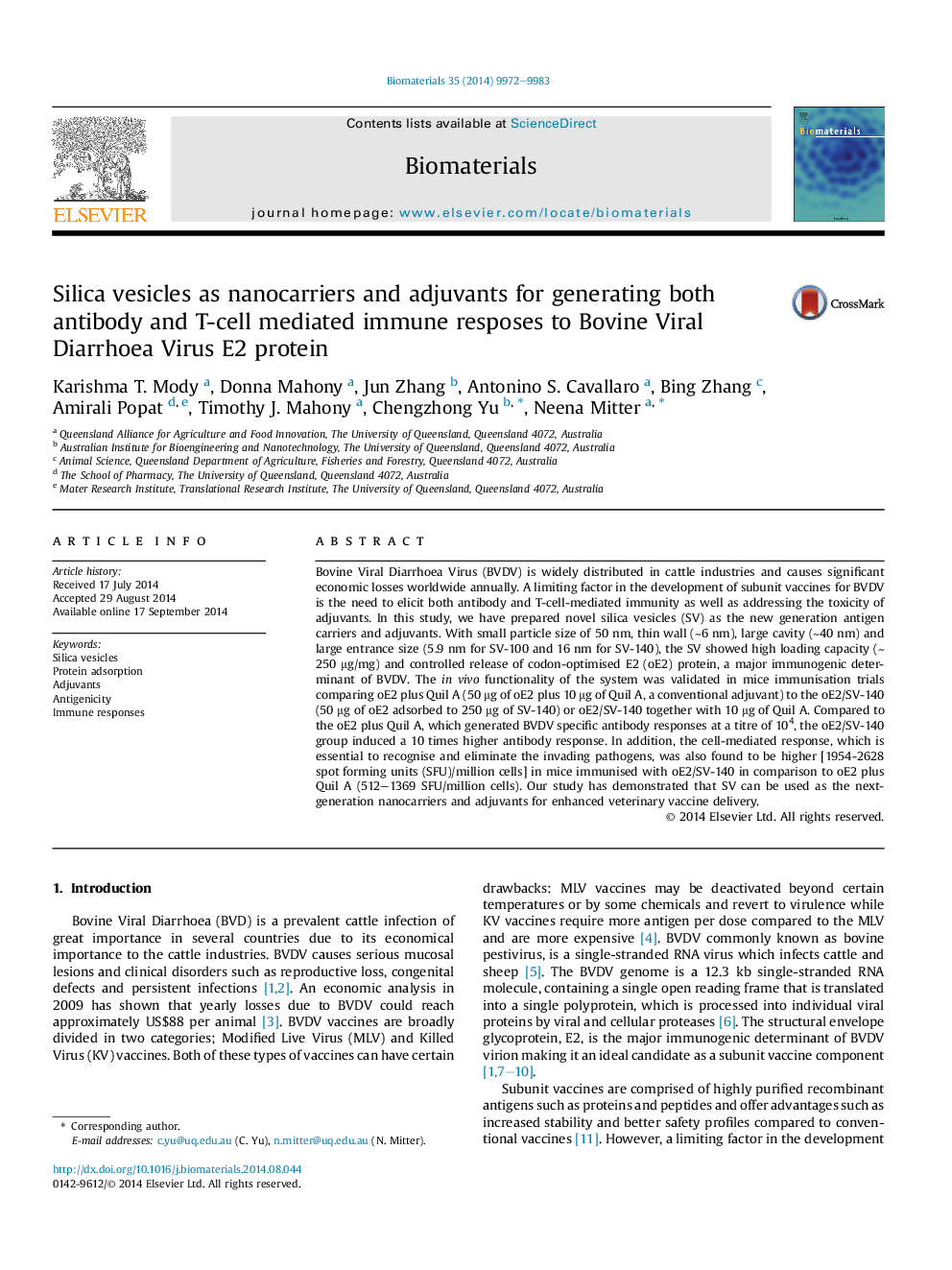| Article ID | Journal | Published Year | Pages | File Type |
|---|---|---|---|---|
| 5960 | Biomaterials | 2014 | 12 Pages |
Bovine Viral Diarrhoea Virus (BVDV) is widely distributed in cattle industries and causes significant economic losses worldwide annually. A limiting factor in the development of subunit vaccines for BVDV is the need to elicit both antibody and T-cell-mediated immunity as well as addressing the toxicity of adjuvants. In this study, we have prepared novel silica vesicles (SV) as the new generation antigen carriers and adjuvants. With small particle size of 50 nm, thin wall (∼6 nm), large cavity (∼40 nm) and large entrance size (5.9 nm for SV-100 and 16 nm for SV-140), the SV showed high loading capacity (∼ 250 μg/mg) and controlled release of codon-optimised E2 (oE2) protein, a major immunogenic determinant of BVDV. The in vivo functionality of the system was validated in mice immunisation trials comparing oE2 plus Quil A (50 μg of oE2 plus 10 μg of Quil A, a conventional adjuvant) to the oE2/SV-140 (50 μg of oE2 adsorbed to 250 μg of SV-140) or oE2/SV-140 together with 10 μg of Quil A. Compared to the oE2 plus Quil A, which generated BVDV specific antibody responses at a titre of 104, the oE2/SV-140 group induced a 10 times higher antibody response. In addition, the cell-mediated response, which is essential to recognise and eliminate the invading pathogens, was also found to be higher [1954-2628 spot forming units (SFU)/million cells] in mice immunised with oE2/SV-140 in comparison to oE2 plus Quil A (512–1369 SFU/million cells). Our study has demonstrated that SV can be used as the next-generation nanocarriers and adjuvants for enhanced veterinary vaccine delivery.
